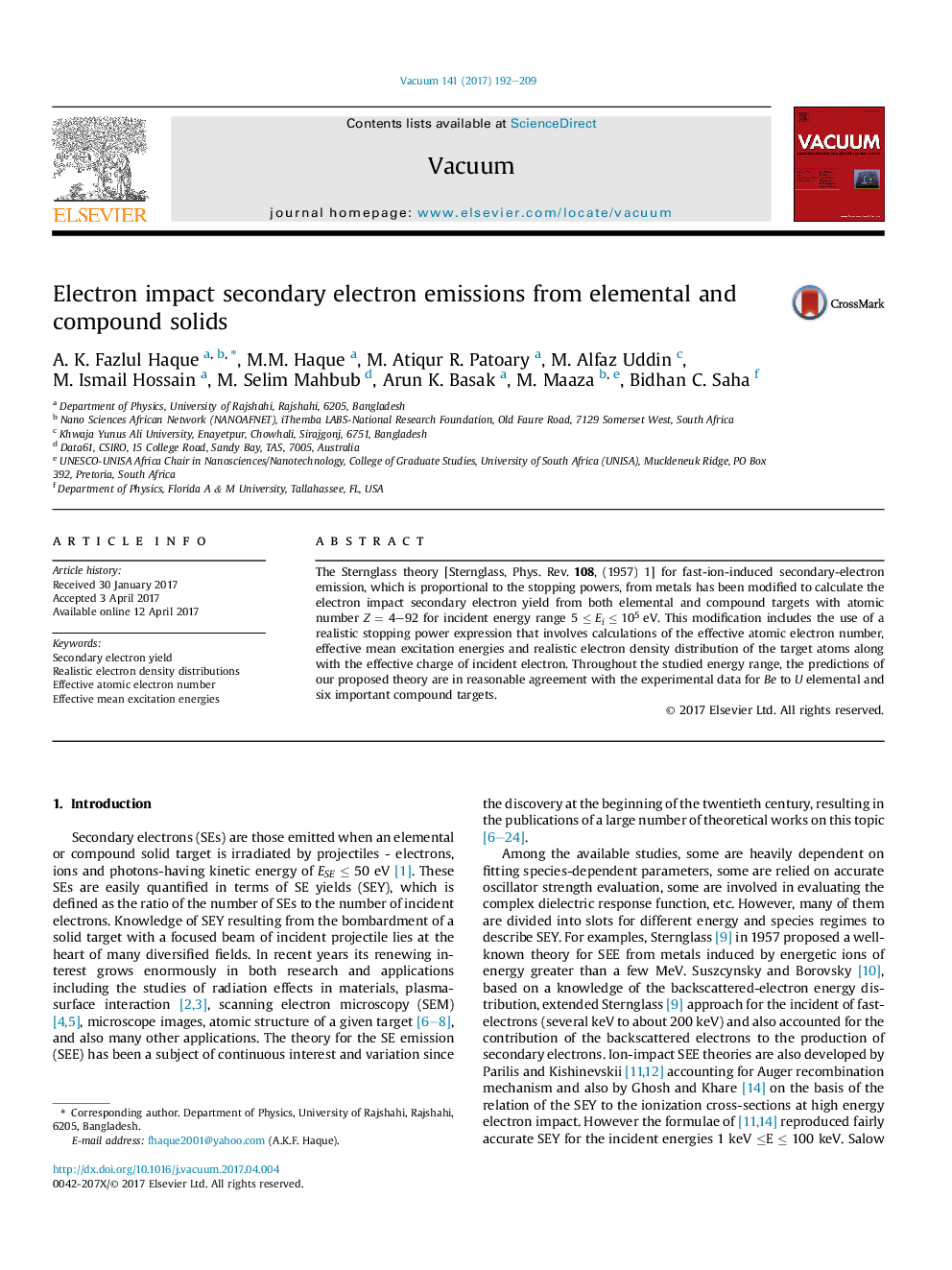| Article ID | Journal | Published Year | Pages | File Type |
|---|---|---|---|---|
| 5468183 | Vacuum | 2017 | 18 Pages |
Abstract
The Sternglass theory [Sternglass, Phys. Rev. 108, (1957) 1] for fast-ion-induced secondary-electron emission, which is proportional to the stopping powers, from metals has been modified to calculate the electron impact secondary electron yield from both elemental and compound targets with atomic number Z = 4-92 for incident energy range 5 â¤Eiâ¤105eV. This modification includes the use of a realistic stopping power expression that involves calculations of the effective atomic electron number, effective mean excitation energies and realistic electron density distribution of the target atoms along with the effective charge of incident electron. Throughout the studied energy range, the predictions of our proposed theory are in reasonable agreement with the experimental data for Be to U elemental and six important compound targets.
Keywords
Related Topics
Physical Sciences and Engineering
Materials Science
Surfaces, Coatings and Films
Authors
A. K. Fazlul Haque, M.M. Haque, M. Atiqur R. Patoary, M. Alfaz Uddin, M. Ismail Hossain, M. Selim Mahbub, Arun K. Basak, M. Maaza, Bidhan C. Saha,
